Four Famous American Trees for the 4th of July
Happy Independence Day! This patriotic holiday is an excellent opportunity to look at some famous American trees. From record holders to historical myths, these trees have a story to tell. Enjoy this fun, educational blog from one of our arborists–preferably under the shade of a tree!
George Washington’s Cherry Tree
Or would it be George Washington’s father’s cherry tree? Either way, I’m sure you know the story: young George receives a hatchet for his 6th birthday and immediately uses it to hack down his father’s tree. When confronted (according to the Washington Presidential Library at Mount Vernon), George immediately owns up to his actions. “I cannot tell a lie…I did cut it with my hatchet.” George’s father was so impressed with his honest son that he hugged him, forgave him, and told him his honesty was worth 1,000 trees. It’s a foundational tale about a towering figure in American history, but did it actually happen?
Probably not. Also, according to Mount Vernon, this myth originated from his first biographer Mason Locke Weems, though it didn’t appear in his book until the 5th edition. This was roughly six years after it was first published and seven years after Washington died in 1799.
So we’re starting off strong with a fictional tree, but what kind of cherry might it have been if the tree were real? There are three main contenders, sweet cherry (Prunus avium), tart cherry (P. cerasus), and black cherry (P. serotina). Sweet and tart cherries are both imported species that were brought over by the Massachusetts Bay Colony and were also widely planted in other colonies by the early 1700s, so either may have been planted on the Washington farmstead. Our native black cherry may also have been the tree in question, though if this was the case, the tree might have been more valuable as lumber than for its fruit.
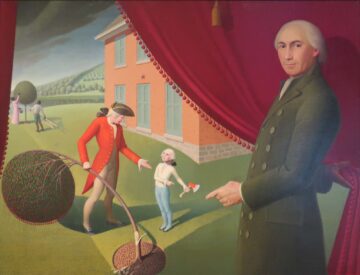
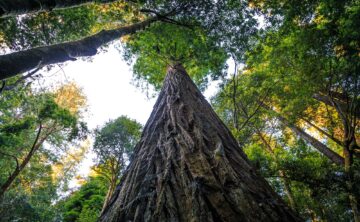
Hyperion
No list of American trees would be complete without (potentially) the tallest tree on Earth. Hyperion is a coast redwood (Sequoia sempervirens) growing in Redwood National Park in California. The tree was discovered and measured in 2006, coming in at just over 380 feet tall (115.9 meters), and is believed to be 700-800 years old. Coast redwoods are among the longest-lived organisms on Earth. The oldest one we know of is over 2,000 years old, and since Hyperion is still growing at a rate of about 1.5 inches per year it has plenty of time to stretch even higher.
The Oak In Centerfield at Griffith Stadium
You’ve probably heard of the first two, but this one is slightly more obscure. From 1911-1960, the Washington Senators played in Griffith Stadium, which had a couple of quirks due to the location of the field. The most prominent quirk was the giant oak tree overhanging the fence in right-center field. The fence itself had an unusual right angle because the owner of the tree refused to sell the land to the team’s ownership when they were building the stadium.
Several prominent big league baseball players famously hit the tree: Babe Ruth did it at least once, and Mickey Mantle actually hit over the tree — twice! — on opening day in 1956. The tree is now long gone when the stadium was torn down to make way for a hospital. However, this big oak tree was a prominent feature of one of the quirkiest Major League stadiums for a long time.

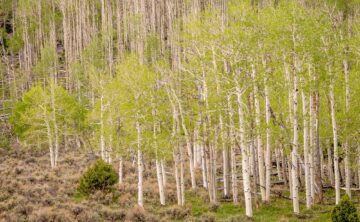
Pando
Pando is another American giant on a number of fronts. Pando is likely the heaviest and oldest living organism on Earth and might be the largest depending on how you feel about the Armillaria mushroom species growing in Oregon’s Blue Mountains. This isn’t an article about mushrooms, though, so let’s refocus on Pando. The whole organism is a stand of quaking aspen (Populus tremuloides) stems growing from a single root system at Fish Lake National Park in southern Utah.
Many people have planted a single quaking aspen in their yard, only to lament the constant battle of sprouts growing off of the root system. This Pando stand is the end result of that same mechanism left alone for thousands of years. The root system grows and spreads, and the above-ground stems sprout, grow, die, and decay to organic matter to support the root system. This process has been happening at least as far back as the end of the last ice age!
The age of Pando is only an estimate, and experts have determined it is at least 14,000 years old and possibly more than 40,000 years old~ This would require the stand to have survived several glaciations — which isn’t impossible but doesn’t seem likely. Pando is also very heavy, weighing in over 6,000 tons (over 12 million pounds).
As you gather with your friends and family this weekend, don’t forget to impress them with your new tree knowledge. Amidst the Fourth of July festivities, let’s remember the tree’s vital role in providing shade, oxygen, and a living connection to our nation’s history. Wishing you a happy and shade-filled 4th of July!
Other items you may be interested in:
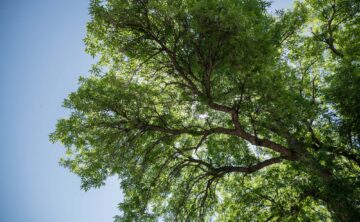
Five Tips to Keep Your Minnesota Trees Resilient in Minnesota’s Shifting Climate
Unlike trees in a forest, urban trees deal with a lot of stressors that compromise their health–starting with competition from turf grass for water and
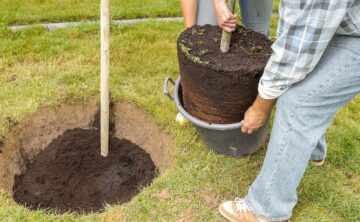
Tree Planting Basics for Minnesota Homeowners
There’s an old saying, “The best time to plant a tree is twenty years ago.” While it makes a humorous point about how long it
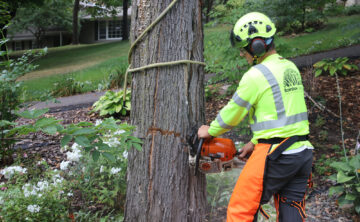
Why Hire an Expert for Ash Tree Removal
Prior to the emerald ash borer’s discovery in 2009 in St. Paul, Minnesota, approximately 20% of the urban canopy were ash trees. As this destructive



